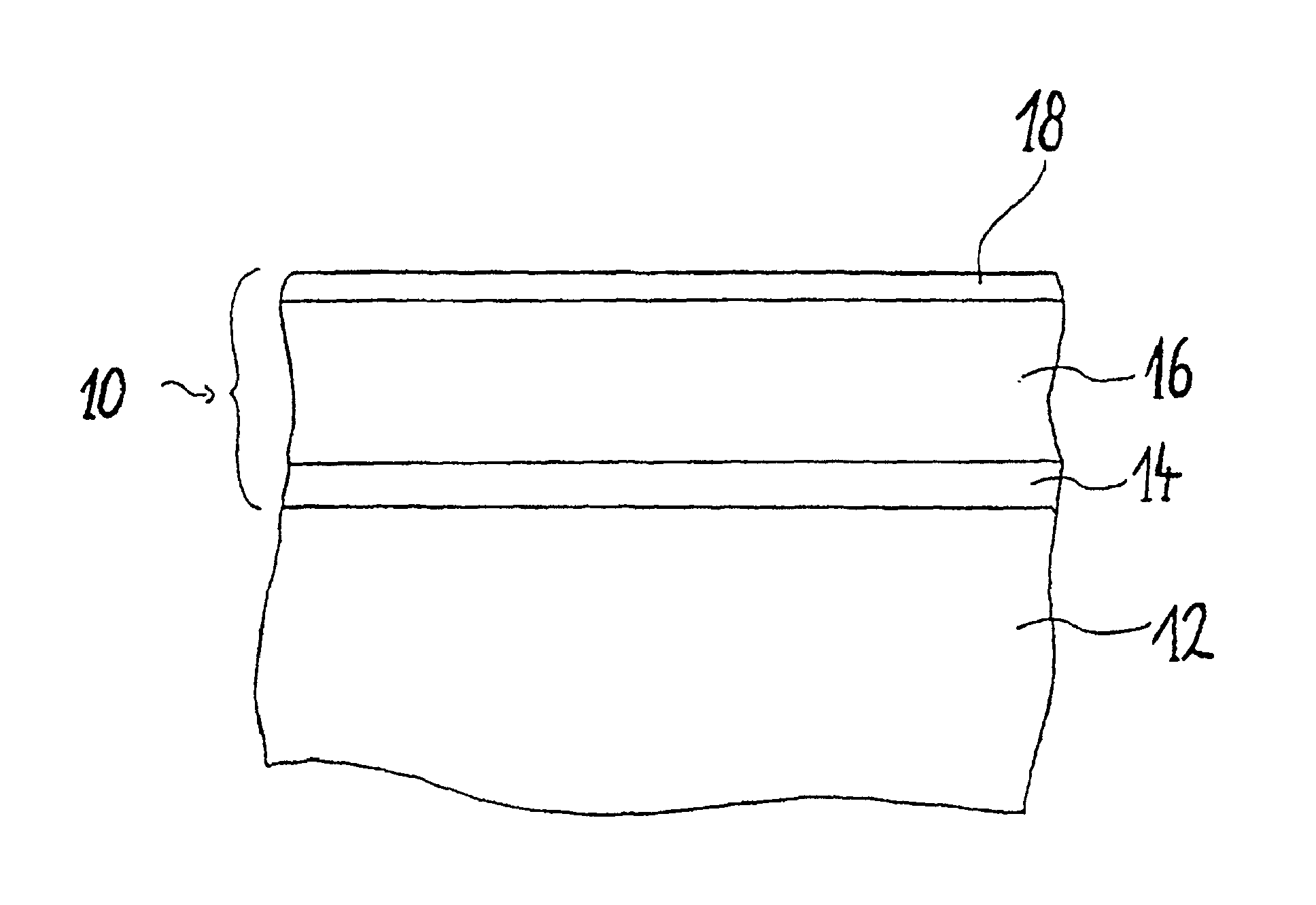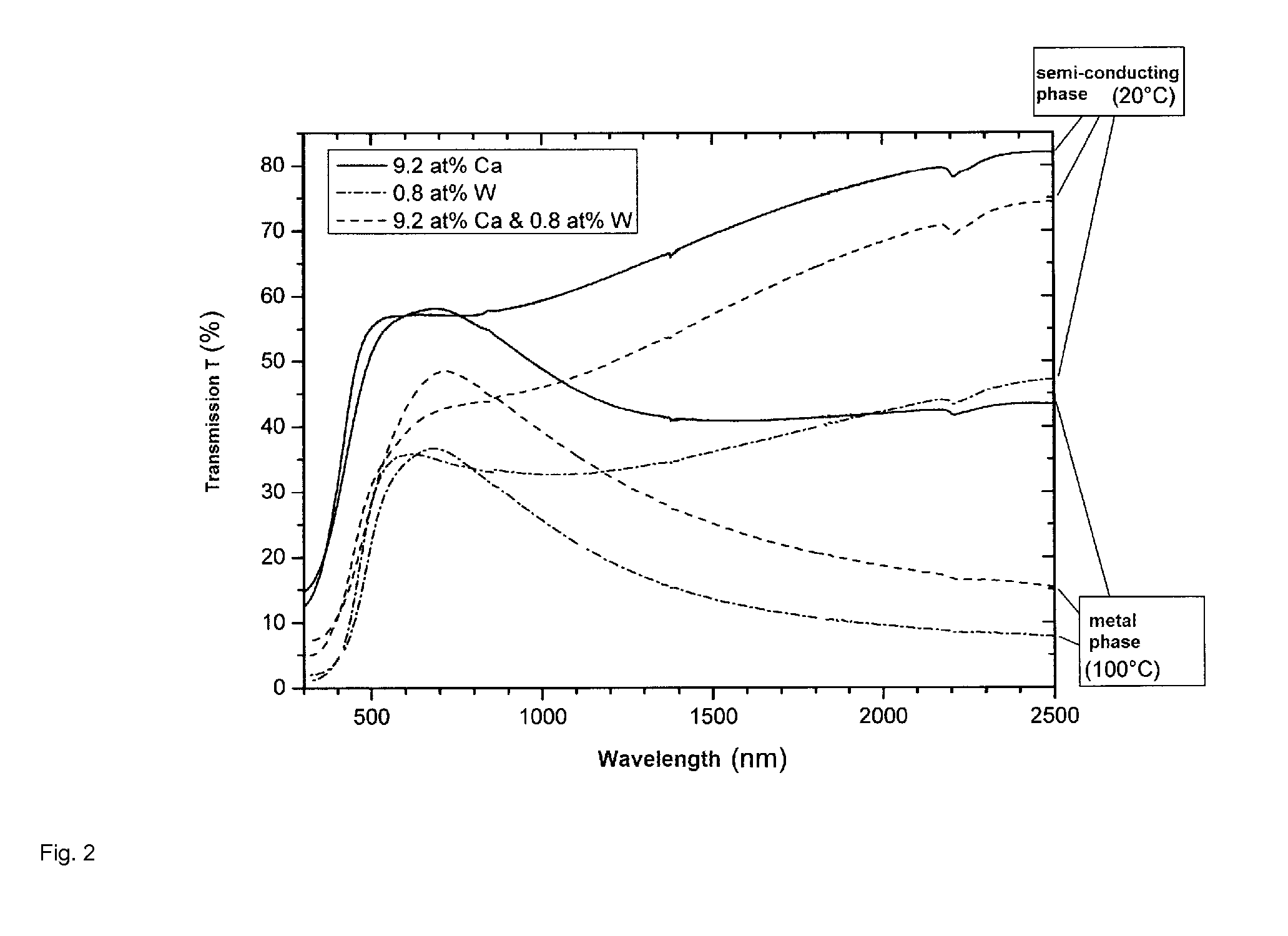Thermochromic glass comprising a coating of neutral-colour vanadium dioxide
a technology of neutral colour vanadium dioxide and thermal glass, which is applied in the direction of vacuum evaporation coating, chemical coating, liquid/solution decomposition coating, etc., can solve the problems of vanadium trioxide, significantly restricted electromagnetic radiation transmission range, and worsening switching characteristics
- Summary
- Abstract
- Description
- Claims
- Application Information
AI Technical Summary
Benefits of technology
Problems solved by technology
Method used
Image
Examples
Embodiment Construction
[0025]FIG. 1 shows the basic structure, according to the present invention, of a thermochromic coating 10, as can be applied for example to a window glass pane 12. To this end, a titanium oxide layer 14 is deposited onto a glass substrate 12 by means of reactive high-frequency or radiofrequency sputtering. The titanium oxide layer thus produced forms a crystal ceramic layer on the glass substrate 12.
[0026]The power of the high-frequency generator during sputtering lies, in the case of the deposition of the titanium oxide layer, preferably in a range from 100 to 600 W (corresponding to 1.2 to 7.4 W / cm2), most preferably at 300 W (corresponding to 3.7 W / cm2). The deposition temperature lies preferably in the range from room temperature to 600° C., most preferably at approximately 300° C.
[0027]A vanadium dioxide layer is then applied to the titanium dioxide layer from a tungsten- or calcium-containing vanadium target or vanadium oxide target by means of reactive high-frequency or radio...
PUM
| Property | Measurement | Unit |
|---|---|---|
| thickness | aaaaa | aaaaa |
| thickness | aaaaa | aaaaa |
| temperatures | aaaaa | aaaaa |
Abstract
Description
Claims
Application Information
 Login to View More
Login to View More - R&D
- Intellectual Property
- Life Sciences
- Materials
- Tech Scout
- Unparalleled Data Quality
- Higher Quality Content
- 60% Fewer Hallucinations
Browse by: Latest US Patents, China's latest patents, Technical Efficacy Thesaurus, Application Domain, Technology Topic, Popular Technical Reports.
© 2025 PatSnap. All rights reserved.Legal|Privacy policy|Modern Slavery Act Transparency Statement|Sitemap|About US| Contact US: help@patsnap.com



